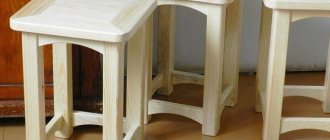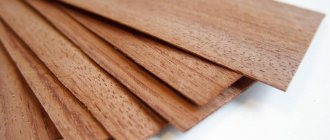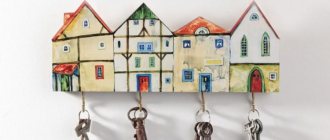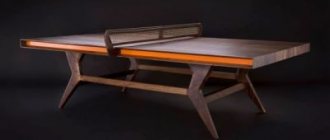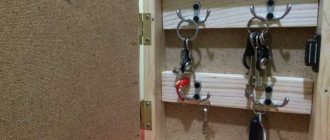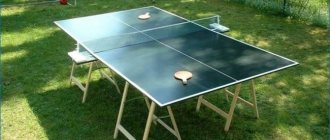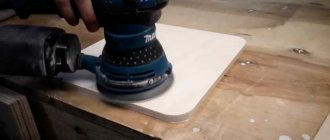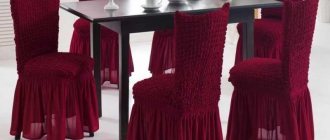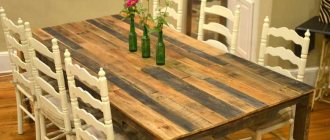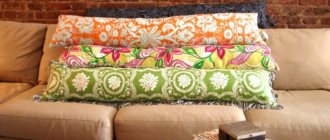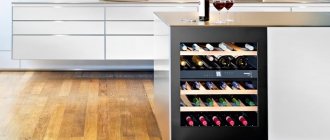Sewing a bedspread with your own hands is not only a way to save on a factory product, but also an opportunity to bring a piece of your soul into the interior. A bedroom is a place where a person spends a significant part of his life, so it is important to make this space as comfortable as possible for relaxation.
Any textile products create an extraordinary atmosphere of comfort in the room; making them yourself using detailed instructions is very simple. Today we will talk about how to create a bedspread.
DIY bedspread
The meaning of the bedspread
It is not always possible to purchase bed linen that would fit into a lovingly created interior. A blanket will help cover such a discrepancy. Moreover, it will not cause any special problems in manufacturing, and the necessary fabric is still easier to find than bed linen.
The bedspread will give the room additional coziness and comfort.
Such an item will not only beautifully complete the decoration of the bedroom, but will also reliably protect the bed linen from dirt, dust, abrasion, and help it stay fresh for a longer period of time.
There are also throw blankets that can be used for napping. In this case, the bed is not spread out, wrapped in a cozy blanket.
Varieties
Every day, the developers of blankets, bedspreads, and covers do not stop developing their works, continuing to fantasize and use new tricks. As a result, this led to a wide variety of styles, from simple to multifunctional, for all models of sofas and armchairs.
Features of covers for sofas and armchairs, their variety
Types of capes:
- Universal. The material is shaped like a rectangular towel, which is simply laid over the sofa. It suits both sofas and armchairs.
- Fragmentary. Rectangular material secured with Velcro or ties.
- With additional functionality. Includes small pockets for the remote control and other household items, this is important for small rooms.
- Euro cover or tension cape. It completely covers upholstered furniture, repeating its shape and bend, smoothing out all the unevenness on the surface.
- Plaid with different effects. The most favorite to use are housewives who like to wrap themselves in a blanket that retains heat, which will not only warm, but also protect the sofa.
A way to give your sofa a new life
Textile
The most optimal fabric for creating a warm, homey bedspread is wool. However, it is too expensive and heavy.
It will be much cheaper to use mixed wool. It is lighter and easier to care for and comes in a variety of shades.
Bright acrylic practically does not shrink during washing; its fluffiness and lightness will create a playful, joyful mood in the bedroom.
Tapestry is a dense and heavy fabric, which will be difficult for a novice craftswoman to handle. But it is perfect for a classic bedroom. Just as luxurious and a little old-fashioned.
Velvet will look no less luxurious, but with frequent use it will quickly lose its original attractiveness.
Cotton fabrics are the ideal material to start your creativity. They are thin, light and comfortable, practically do not crumble or stretch.
Viscose behaves approximately the same way, but after washing the bedspread may shrink.
Note!
- DIY feeder - step-by-step instructions for creating a feeder + detailed diagrams with photo reviews
- Do-it-yourself rugs - TOP 120 simple patterns with master classes on how to make them yourself + photo reviews of finished rugs
- Do-it-yourself dolls: a master class on making a beautiful doll. Simple instructions with photo examples of ready-made options
Elegant and lightweight silk is suitable for creating almost any interior. But due to the smoothness of the material, it is difficult to sew; it constantly strives to slide off the cutting table and the stand of the sewing machine.
Faux fur will give the room additional volume.
Yarn
Lately, knitted bedspreads and blankets have become especially popular. Soft and comfortable, they allow you to fill the interior with an atmosphere of real home warmth and comfort. But sometimes it happens that after washing the product may shrink or its size was initially chosen incorrectly. The ability to knit and a creative approach to solving the problem will help correct the situation. All you need: knitting needles or a hook of a suitable diameter and yarn of appropriate density. To lengthen the product, you can use a thread of an identical shade and simply knit the required number of rows. If there is no such yarn, you can show your imagination by using a thread of a different shade (contrasting or similar in tone) and add an equal number of rows above and below. When it is necessary to increase the cover along the entire perimeter, it is better to use a hook.
Bedspread models
The simplest bedspread is a regular piece of fabric with finished edges. It’s not difficult to make, and you don’t need a special pattern.
It will be a little more difficult to make a bedspread with ruffles, puffs or flounces.
An unusual double-sided bedspread will help you quickly change the design of your bedroom.
Note!
- DIY satin ribbon bows - step-by-step instructions for creating unusual bows + detailed diagrams with photos
- Do-it-yourself furniture restoration: step-by-step master classes on restoration at home (120 photo ideas)
- Do-it-yourself rack: step-by-step instructions with photos and descriptions on how to make an unusual rack
A lightweight blanket will look great in the summer heat, but a more durable product with a lining and inner layer is more suitable for the cold season, as well as a quilted version.
Style
As mentioned just above, modern style gives preference to certain colors and textures. For example, Scandinavian trends are characterized by the use of fur and wool.
The color scheme is rich in white. Bright shades are included as small accents. These can be thin stripes, amorphous figures, etc. A prerequisite is that all this diversity must be surrounded by a large number of white shades. Like fruit pieces in yogurt.
Provence and Mediterranean style are a combination of blue, green, and gray. These are all kinds of shades of the sea. Mixed with bright sun, sand, citrus fruits and delicate green meadows.
Africa can be different. But it is always bright and unforgettable. It is the color of ocher, clay, spice and savanna. As for textiles, they are predominantly in bright colors. Although, you can also find examples of calm tones that can be obtained with natural dyeing. These are muted shades of green and brown. White textiles are not welcome because they are considered mournful.
The Moroccan direction is especially interesting. It is characterized by elegant textile patterns inspired by Muslim tradition.
Technological directions of design, despite their asceticism, still give preference to natural fabrics. However, synthetics can be used, and sometimes necessary.
Shabby Chic is the kingdom of roses, frills, lush folds and ruffles. Delicate pastel colors will come in handy here.
Whatever style the room is designed in, the bedspread serves as a key element that unites all other parts into one harmonious picture.
Decor
As design elements you can use regular or figured stitches, ribbons, bows, tassels, cords, frills, embroidery, appliqués. Most of the decor is placed around the perimeter and bottom of the product so that they do not interfere with lying or sitting. An exception is made for stitching, appliqué, and embroidery.
Light folds at the bottom of the bedspread are designed to beautifully decorate the frame and legs of the bed.
At the same time, when selecting decorative elements, they take into account the style of the bedroom, the color scheme and their own preferences.
Sewing a quilted cape
A bedspread for a bedroom bed is not the simplest product, so it is necessary to take into account many sewing features at once.
The right pattern: selection and calculation
A large pattern should be a priority if such work is being done for the first time. The accuracy of the location of the pattern is the main requirement that will make the bedspread indistinguishable from factory models. All figures should be located on the cape without displacement in any direction. They must begin (end) strictly at the edge.
In order not to make mistakes in the calculations, first make a drawing on a small sheet of checkered paper: for example, not a millimeter paper. Then the exact outline of the bed cover is applied to the wrong side of the fabric. The correctness of the pattern is checked by transferring it there. Use chalk for preliminary drawings on the reverse side.
It is not advisable to use either a pencil or chalk on the “face” of the fabric. A suitable solution is to outline the future stitch with contrasting threads. Other options are special adhesive paper that comes off without a trace when wet, or washable felt-tip pens. However, basting remains a favorite as it additionally helps minimize stitching in the fabric.
There is another way - a seam laid along the wrong side of the product. Its plus is the sagging that will remain only on the wrong side. The downside is the difficulty of the work, since to make the seams even, you need sufficient experience and a good eye. In addition, all layers of the bedspread will have to be pulled in both directions, and it is quite difficult to do everything efficiently at once. The fewer cells or diamonds on the product, the neater it will be. And the easier it is to avoid the debut “pancake lumpy”, which is possible due to the landing of matter at the joints.
Frill for cape
This element is used as a decorative finish, but it can also play another role - to make some stitching flaws invisible: to hide the corners of diamonds that are far from ideal. In this case, it is not at all necessary to buy an additional piece of fabric, because such strips can be assembled from the pieces that remain after cutting the main fabric.
The main requirement is that the cut of all small pieces must coincide in direction. If you ignore this mandatory condition, then all the elements will have a different shade, which will not add attractiveness to the bedspread. It is recommended to hide the seams connecting the details of the frill in folds, then they will not be noticeable.
The optimal width of the folds is 10 cm, but plus/minus a few centimeters, changes in the step between them, direction (for example, counter) are issues that the craftswoman herself decides. There are many ways to sew on a frill. One of the possible (and beautiful) is double stitching.
Color spectrum
Most often, the material for the future creation is selected to match the existing textiles; usually it is made in the same color scheme as the curtains. But there are exceptions to this rule, when a blanket on sofa cushions or a bed becomes a contrasting accent spot.
In a dark room, preference is given to soft light shades. For a bright room, you can use any suitable colors.
Note!
Corrugated paper flowers: TOP 100 photos of ready-made options + instructions on how to make them yourself- DIY family tree: instructions for creating a family tree + DIY design ideas
- Do-it-yourself sun lounger: photos with instructions for creating sun loungers + detailed diagrams of the stages of work
The brightness and multicolored tints are more suitable for large bedrooms, and warm colors will make the room much more comfortable.
For a colorful bedroom decoration, choose a calm, monochromatic bedspread, but an overly calm room will be enlivened by a cape with a pattern.
How to choose a color?
The choice of a particular color of the bedspread is influenced by the following nuances:
- If we are talking about a classic interior, then you need to choose a bedspread that matches the color of the curtains or wallpaper. For less austere interiors, you should choose colors that are basically present in the room - the bedspread can be in harmony with the color of the lampshade, flower pots, and carpet.
- The design in which the bedspread is combined with the walls looks quite interesting. So, if the walls have light green wallpaper, then you can choose fabric in the trendy mint color.
- You are allowed to choose a blanket to match the color of the furniture set. This is especially suitable in cases where the bed has a voluminous decorative headboard.
- To decorate a room, you can choose shades from one palette. So, if the curtains, wallpaper and other elements in the room are light pink, then you can choose bright crimson fabric for the blanket.
- If the room is decorated in pastel colors, then the blanket can be made in any bright color. It will serve as an unusual color accent. It is advisable to choose a bedspread that matches the tone of the walls
Dimensions
The size of the bed cover can also be different. Usually the bedspreads go all the way to the floor, but there are also mini versions. Some of them only cover the bed linen, while others are small tracks laid along or across the bed or located diagonally.
The first option is most often used in classical styles and is decorated with lush decoration, it also becomes the main decoration of the room of a young princess, the second is more suitable for boys’ children’s rooms and rooms decorated in minimalist styles, and the third type is most often used for country styles.
Some tips
Cutting the material is carried out only on a flat surface.
To create flounces, you can use scraps of fabric; the only rule is that all the pieces must be matched in the same direction (length or width). When creating a patchwork quilt, the pieces of fabric must be in harmony with each other.
A bed runner is usually made of contrasting colors, otherwise it will get lost on the bed. Usually it is laid out across or along the bed, but it is much nicer to place it diagonally. The width and length of the future product are chosen arbitrarily.
You can sew several bedspreads at once and change them depending on the season.
The idea of making a bedspread with your own hands will help make your home unusual and fill it with an item made with soul. And if you practice a little, you can please your closest relatives with such a gift by presenting an elegant bedroom decoration for the next holiday. A small cape is suitable even for a sofa. And photos of bedspreads will help you choose the design of your future creation.
Material consumption
The purchase of material depends on the chosen model, size and desire to decorate the future creation.
To calculate the fabric, you need to measure the length and width, add the height of the sleeping bed from the floor and do not forget about seam allowances.
When making lush puffs, fabric consumption will increase by 30-40%; to make frills and flounces, you will have to buy one and a half to two times more fabric, which will be used to make this element. A quilted bedspread will require a little more raw materials.
Manufacturing methods
Most often, the bedspread is simply sewn from the selected cut, decorating and decorating it if necessary.
But there are several other techniques for creating such a bed cover.
The bedspread can be sewn from various scraps and even knitted. Of course, such a process will require much more time and perseverance, but when asked to go wash the dishes, you can safely say: “We are making a patchwork bedspread.”
Traditional way
To make a regular bedspread, you will need to buy fabric, cut it according to a pre-made pattern and sew it in accordance with the instructions.
To create puffs, you will have to manually tighten the stitches, forming a three-dimensional pattern.
To create frills and ruffles, first sew the fabric itself, then make frills and sew the parts together.
Secret tricks
Not all housewives like to make their bed.
However, this process can be dealt with quickly and efficiently if the actions are carried out according to the following scheme:
- Remove decorative elements.
- The sheet is spread on the mattress. You will need to tuck it in at the corners for a secure fit. You can significantly speed up the process by using a sheet with an elastic band.
The first step is to straighten the sheet and fold the corners
- The duvet cover is put on the blanket only after it has been thoroughly shaken. The blanket fits to the corners and gradually straightens out. At the same time, you will need to unroll the duvet cover.
- At the last stage, pillowcases are put on. First, the corners of the pillow are straightened.
The corners of the pillows also need to be straightened
Patchwork technique
This technique will allow you to create a unique bedspread from several or many cuts or scraps of fabric.
To begin with, the material is selected by color or style, a specific pattern is created, then the parts are carefully sewn together. The product is ironed and stitched to fleece or padding polyester to maintain its shape and sewn to the lining.
Any fabric can be used, as long as it matches the style and design.
A patchwork-style bedspread made from old jeans will look unusual.
Knitted blanket
To say “we are knitting a blanket with our own hands,” you need to prepare thick threads and equally thick knitting needles.
Wool, synthetic threads and even textile ribbons, pre-sewn together, are used as threads.
Photos of a homemade bedspread will show how cozy or impressive it can look.
Large knitting technology
Blankets made from thick yarn are especially popular today. For creative work, a specialized material is used, distinguished by its softness, pleasant texture, and beautiful appearance.
Such blankets are knitted by hand, without using knitting needles or crochet hooks. Instructions on how to knit a large knit blanket are available to every needlewoman along with educational video tutorials.
